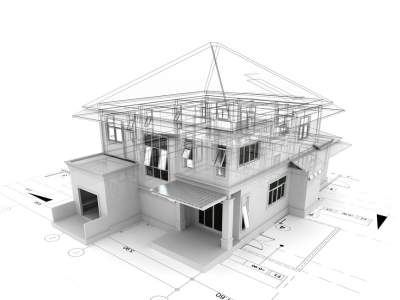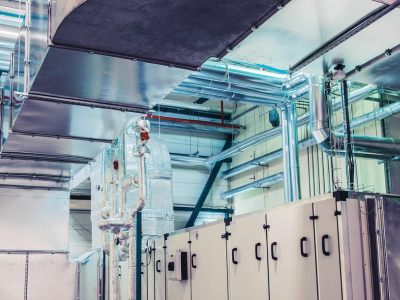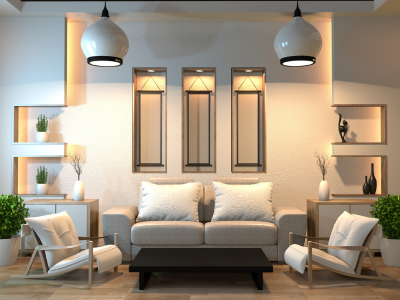How Photometric Analysis Improves Energy Efficiency in Commercial Buildings

Property owners, designers, and building supervisors must prioritize energy efficiency in commercial buildings. Due to increasing energy costs and sustainability awareness, there is a powerful drive to execute energy-saving strategies. Photometric analysis is one such tactic; it assesses and adjusts lighting design to improve energy efficiency. Photometric analysis reduces the energy used in commercial buildings by providing precise data to guide decisions about fixture type, lighting placement, and overall system design.
What is Photometric Analysis?
The photometric analysis calculates and interprets light's direction, intensity, and distribution in a particular space. It assists engineers and designers in determining how light interacts with the surroundings and how much illumination is needed to achieve expected brightness levels without consuming excessive energy. A photometric analysis establishes the efficiency with which a lighting system distributes light to particular regions by using variables. It also considers elements that can affect energy economy and visual comfort.
Photometric Plan Design:
Lighting largely influences energy usage in commercial buildings, such as retail stores, office spaces, or industrial facilities. A smart photometric plan design is necessary to guarantee effective and efficient lighting. Photometric plan designers generate simulations that show the results of various lighting patterns using specialist software.
These simulations help designers experiment with different lighting arrangements and determine how best to arrange and specify fixtures to maximize energy efficiency. The findings are displayed in a photometric plan, which offers a thorough arrangement of the lighting conditions in various sections of the structure.
How Photometric Analysis Improves Energy Efficiency
Optimizing Light Placement
Photometric analysis significantly affects energy efficiency by optimizing lighting fixture location. Conventional lighting designs frequently waste energy and produce poor lighting quality by over-illuminating some areas and under-illuminating others. By identifying places that need more or less light, a photometric plan designer can reduce the number of fixtures required while guaranteeing uniform lighting distribution.
Reducing Over-Illumination
Many business buildings use more energy than necessary because they are overlit. Photometric analysis determines the precise light needed in each building region, preventing over-illumination. This is also helpful in locations that do not require as much lighting as workstations or retail sections, like hallways, conference rooms, and storage areas. Businesses can drastically reduce energy use by modifying light settings to meet specific needs.
Choosing Energy-Efficient Lighting Technologies
A photometric study doesn’t only focus on where the lights are set but also on the kinds of lights being utilized. LED lighting and other energy-efficient technologies can be incorporated into the design to lower energy usage. LEDs consume up to 75% less energy than traditional incandescent lighting and last much longer. Utilizing photometric data, a designer can specify the optimal areas for LED installations, maximizing their energy-saving possibility.
Enhancing Daylighting Strategies
Including daylighting or natural light in lighting design is another essential component of energy-efficient lighting. With the help of photometric analysis, architects can better incorporate energy solutions into the building's overall lighting system. By comprehending how natural light interacts with a room, designers can decrease the quantity of artificial lighting utilized during the day. Utilizing less electricity improves the building's environmental effect and enhances energy efficiency.
Complying with Energy Codes and Standards
Buildings must adhere to strict lighting performance standards under several building codes and energy standards, including LEED (Leadership in Energy and Environmental Design). A photometric study comprehensively considers the building's lighting system, guaranteeing compliance with these requirements. A lighting plan that meets these needs can assist companies save more energy and be suitable for energy-saving incentives.
Enhancing Maintenance Efficiency
Photometric analysis can forecast lighting system wear and tear and lower maintenance expenses. Businesses may more efficiently plan maintenance by knowing how lights age and when they will probably need to be replaced. This prevents expensive emergency repairs and guarantees that the lighting system will always run as efficiently.
Role of Photometric Plan Designers
One of the most critical people who ensure that lighting systems are energy-efficient is the designer of photometric plans. These experts are adept at assessing various fixture options, studying light distribution, and creating lighting plans that compromise efficiency and performance. Photometric plan designers collaborate with engineers, architects, and facility managers to create personalized lighting designs that are tailored to the specific requirements of each commercial building.
Furthermore, these designers make data-driven choices on optimal lighting solutions by simulating various lighting settings using sophisticated tools. Their knowledge enables companies to save costs and promote sustainability by lowering energy usage while preserving ideal lighting conditions.
Final Takeaway
Photometric analysis is a crucial tool for raising commercial buildings' energy efficiency. It lowers business operating expenses and energy consumption by utilizing energy-efficient technologies, avoiding over-illumination, and optimizing light placement. To ensure that commercial buildings achieve their lighting needs and energy-saving targets, photometric plan designers play a crucial role in developing lighting systems that balance performance and efficiency. Including photometric analysis in the building design process is a wise and sustainable decision for any company trying to reduce expenses and increase energy efficiency.
Note: IndiBlogHub features both user-submitted and editorial content. We do not verify third-party contributions. Read our Disclaimer and Privacy Policyfor details.





